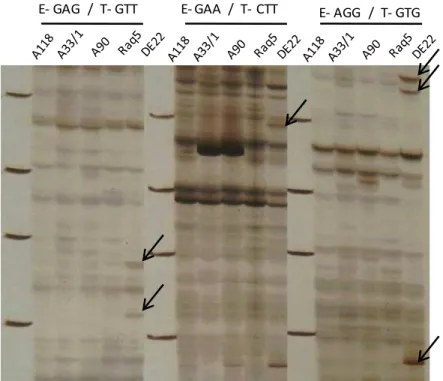Evaluation of some upland cotton (Gossypium hirsutum L.) varieties for salinity tolerance screening
Texto
Imagem



Documentos relacionados
The effect of different population densities of Pratylenchus brachyurus on the growth of cotton ( Gossypium hirsutum ) plants was studied in three greenhouse experiments,
In order to evaluate the resistance of cotton genotypes, Gossypium hirsutum (L.), to the whitefly Bemisia tabaci B-biotype, both free-choice and no- choice attractiveness
papaya L.), the objective of this study was analyze the genetic diversity of 32 genotypes including cultivars, landraces, inbred lines, and improved germplasm using the AFLP
The main conclusions of the study were: the content of genetic information detected in Brazil nut by AFLP markers was high, and can be used for genetic analysis to obtain
It may be concluded from the present study that the microsatellite markers are effective in estimating the level of genetic variation among and within the populations of
We describe the vertical and horizontal distribution of the cotton aphid Aphis gossypii Glover within a cotton plant in two cotton ( Gossypium hirsutum Linnaeus) cultivars
Overexpression of MIC-3 indicates a direct role for the MIC gene family in mediating Upland cotton (Gossypium hirsutum) resistance to root-knot nematode (Meloidogyne
Considering the low genetic diversity of upland cotton cultivars and germplasm, we propose several strategies of genetic improvement in China: developing new technologies for